Scary Creatures Found in the Amazon .l
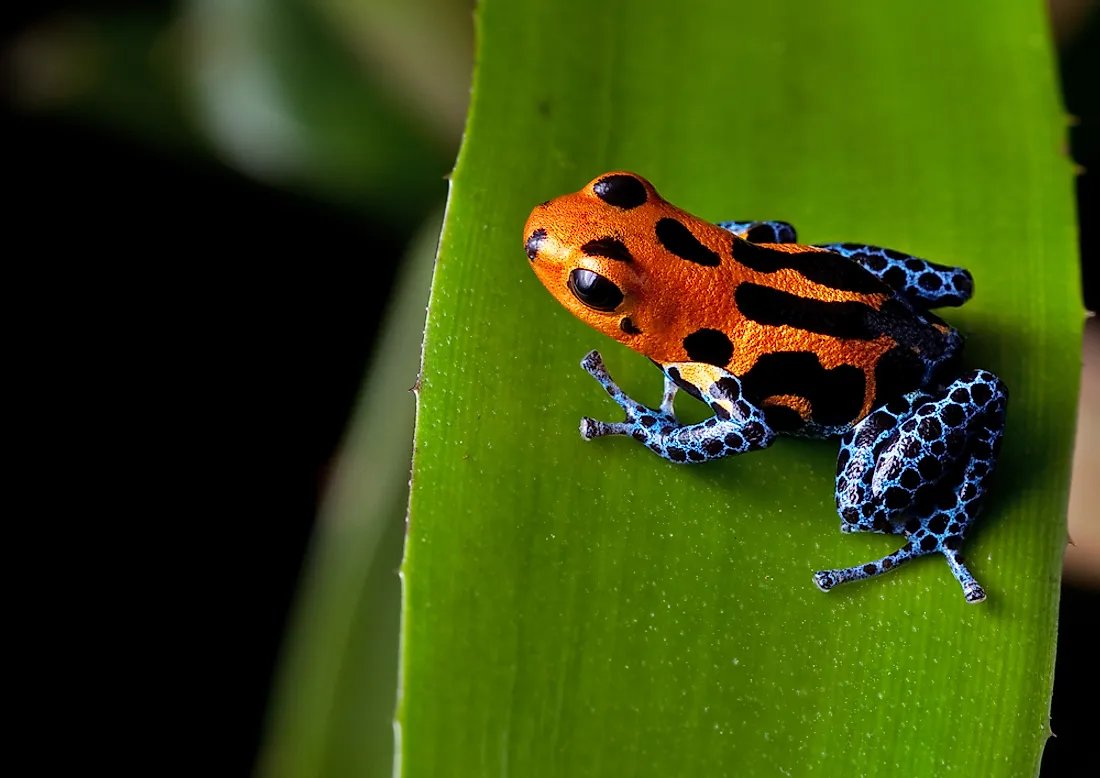
Visiting the Amazon rainforest is the coveted dream of many nature lovers and wildlife enthusiasts from around the world. However, visiting the world’s largest tropical rainforest is not free of dangers as the forest houses some of the most deadly creatures known to us (and maybe deadlier ones yet to be discovered). The Amazon is home to the mighty jaguar, the powerful green anaconda, the highly toxic poison dart frogs, the shocking electric eels, flesh-eating piranhas, and more. Thus, visitors to the Amazon are advised to be cautious and well aware of their surroundings at all times during their visit to the rainforests. Here we describe some of the deadliest creatures of the Amazon and why we consider them so. However, in the end, we must remember that most of these creatures mentioned below are facing threats to their survival due to human activities. Now, who is deadlier, them or us, is a question we have to think over.
10. Amazonian Giant Centipede
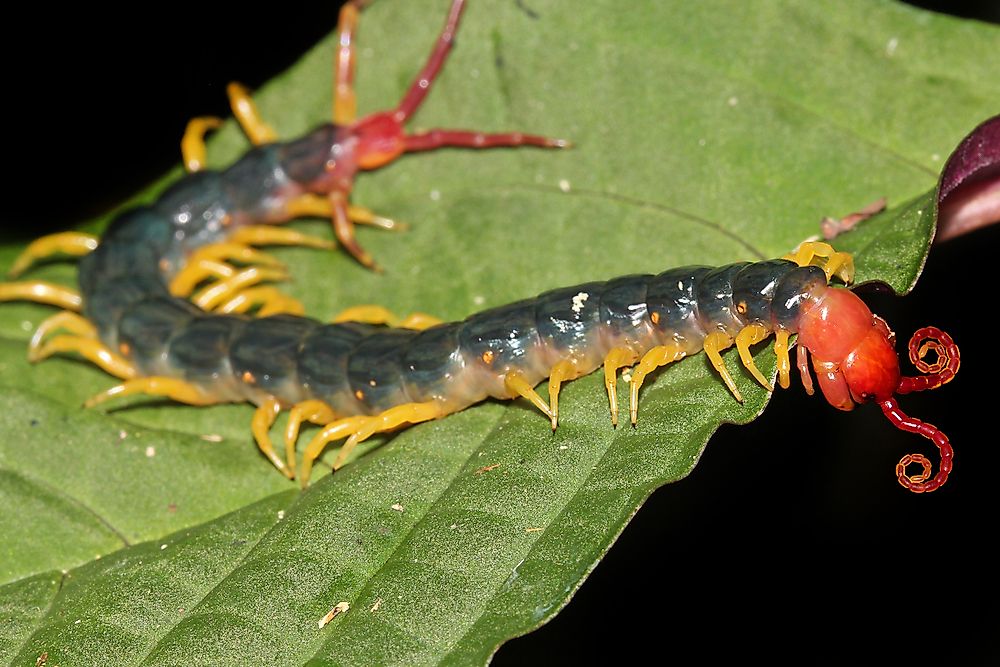
The Peruvian giant yellow-leg centipede, or the Amazonian giant centipede, is one of the largest centipede species in the world. The creature is about 30 cm long and preys on a large variety of animals. Interestingly, the centipede’s diet is based not only on other invertebrates but it can also overpower and kill creatures larger than it in size like lizards, snakes, frogs, mice, bats, and sparrow-sized birds. The centipede’s primary weapons for killing prey are a pair of modified legs called forcipules. The centipede uses the forcipules to penetrate the body of the victim and inject a highly toxic venom into the bloodstream. The killer creatures can even climb the ceilings of caves where they can hold and manipulate their prey like bats with only a few legs attached to the ceiling. A four-year-old human child was reported to have been killed by the centipede’s venom.
9. Mosquito
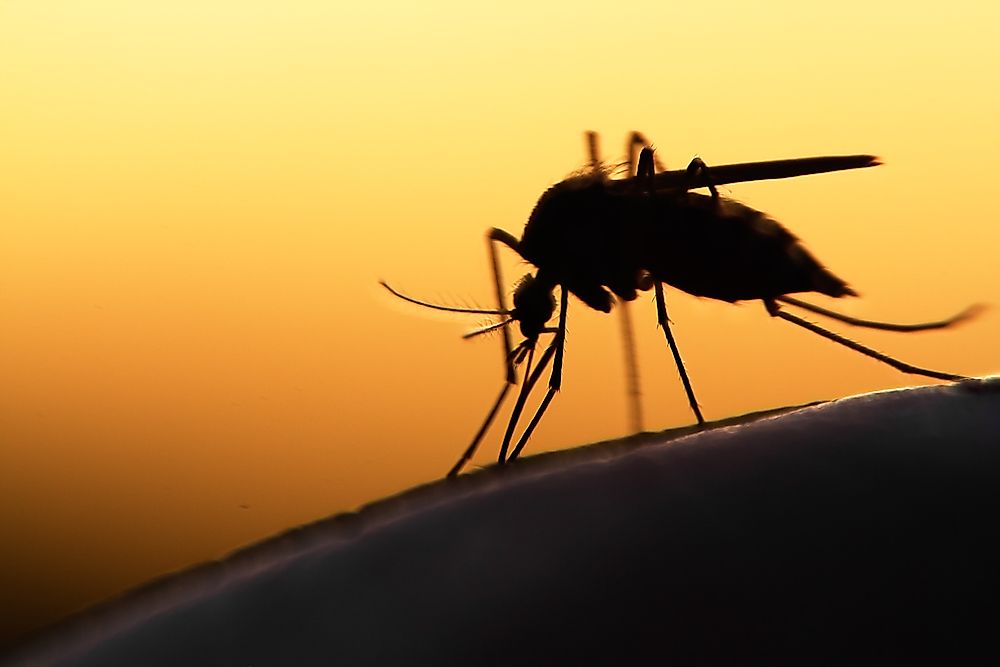
For a visitor to the Amazon rainforest, mosquitos are perhaps the most dangerous creatures. Mosquitos thrive in hot and humid tropical environments and the Amazon rainforest provides the ideal conditions for these insects. The mosquitos might act as the vectors of pathogens that cause malaria and yellow fever. Tourists to the Amazon are advised to take all necessary precautions to avoid mosquito bites which include yellow fever vaccinations and mosquito repellant creams and other related preventive measures.
8. Wandering Spiders
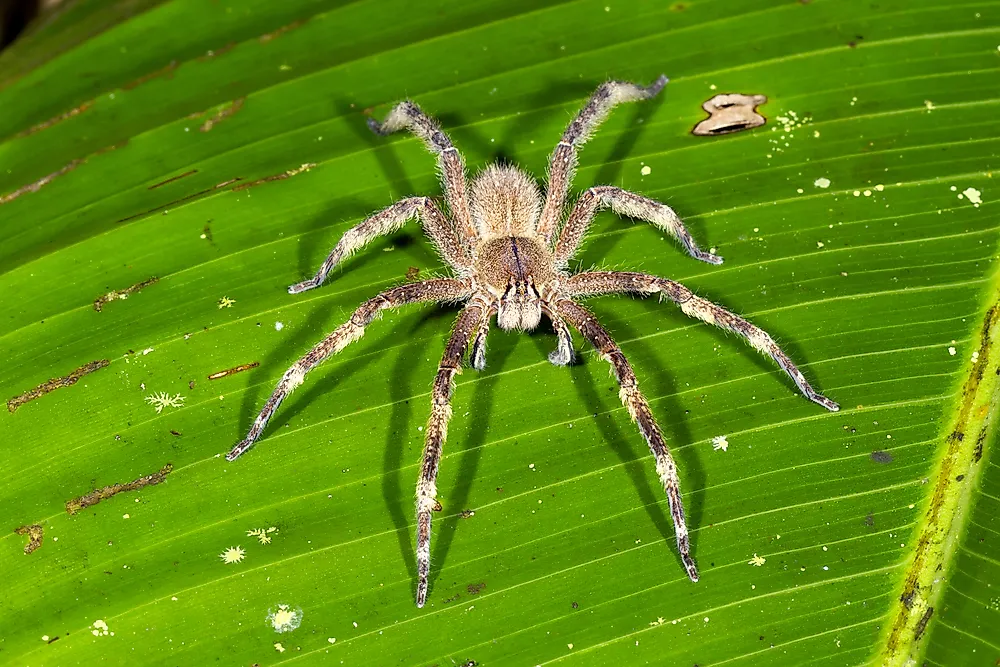
The Brazilian wandering spider is the most venomous arachnid in the world. Even the scientific name of the spider Phoneutria means “murderess” in Greek. The spiders are called wandering spiders as during the night they prefer to crawl on the floor of the jungle looking for prey instead of building webs and staying in them. During the day, the spiders hide in various places including the banana plant. The spiders might also wander into human settlements where they might remain hidden in houses and cars. If disturbed by humans, they may bite. The small size of these spiders makes them even more difficult to detect. Until 1996 when an antidote was found, 14 people were reported to have died from the bites of the wandering spider. The venom of the spider causes extreme pain and inflammation, as well as loss of muscle control which might lead to respiratory paralysis and death. Bananas imported from South America have on rare occasions been reported to carry the wandering spider to other countries.
7. Jaguar
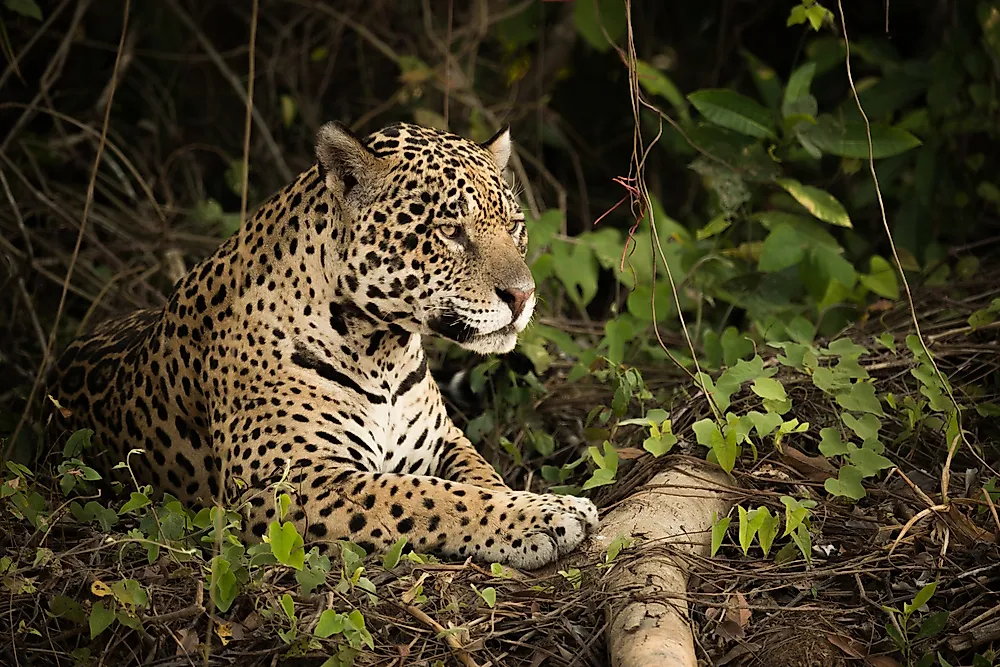
The third largest big cat species after the tiger and the lion, the jaguar is a charismatic animal of the Amazonian wilds. The jaguar is an obligate carnivore and is well adapted to kill. The diet of the jaguar is wide and varied and includes at least 87 species. Although humans do not feature in this diet, it is easy for a jaguar to kill an adult human being. The jaguar can actually take about any riparian or terrestrial vertebrate in South and Central America and exhibits a preference for large prey. Adult caimans, capybaras, tapirs, zorros, peccaries, deer, etc., are all potential prey for jaguars. The jaguar is an efficient killing machine which employs suffocation and deep throat-bite technique to kill its prey. Another technique unique to the jaguar is biting directly through the temporal bones of the skull and piercing the brain. In the case of caimans, the jaguar leaps onto the back of the prey and severs its cervical vertebrae immobilizing it. For smaller prey like dogs, a simple paw swipe is sufficient enough to kill. One can understand how vulnerable and helpless a human would be in front of this powerful predator. Since the Amazon forests are getting depleted at a rapid rate, chances of human-jaguar encounters are also increasing.
6. Electric Eel
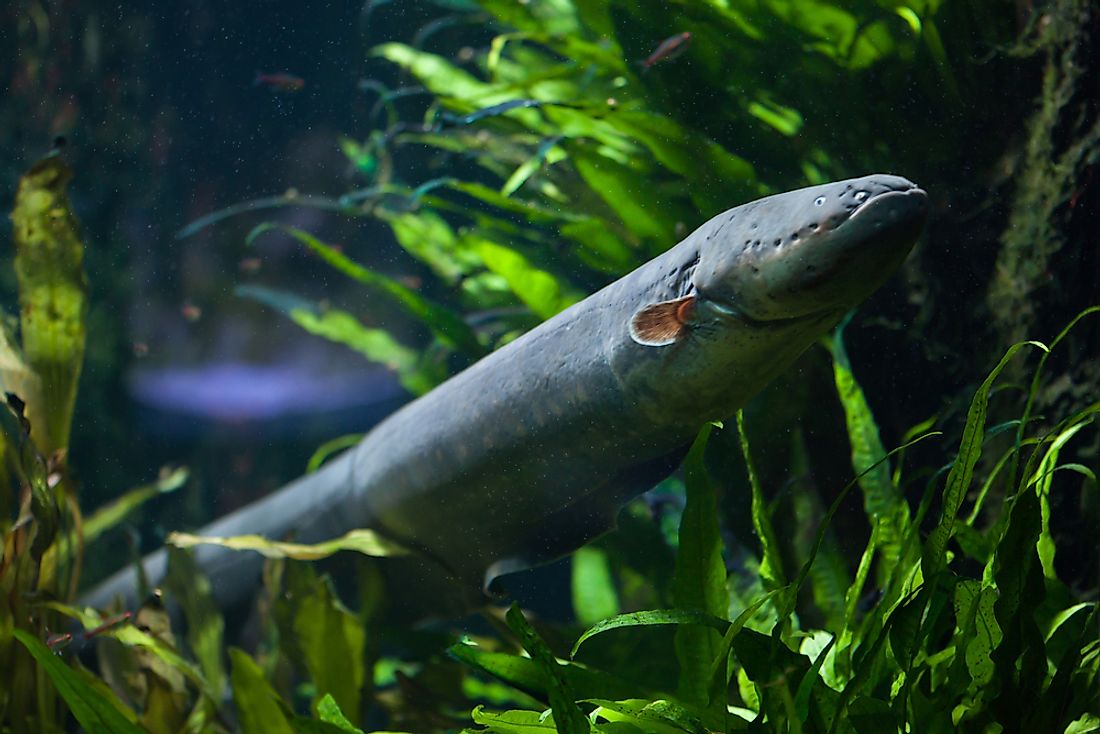
A shocking danger lurks beneath the waters of Amazon River in Brazil. The electric eel is not a true eel but actually a knifefish capable of delivering a massive electric shock to those who threaten it. Three pairs of abdominal organs of the fish allow it to generate electricity enough to stun an adult human being. The eels use their electricity generating capacity to stun prey before consuming them. Fatal attacks on humans are rare but not completely non-existent. A single jolt could stun a human being enough to cause the person to stop breathing and drown even in shallow water. Multiple shocks could definitely trigger respiratory failure in humans. In the past, there are cases where the fish have delivered shocks strong enough to kill horses and even the stun an adult caiman.
5. Black Caiman
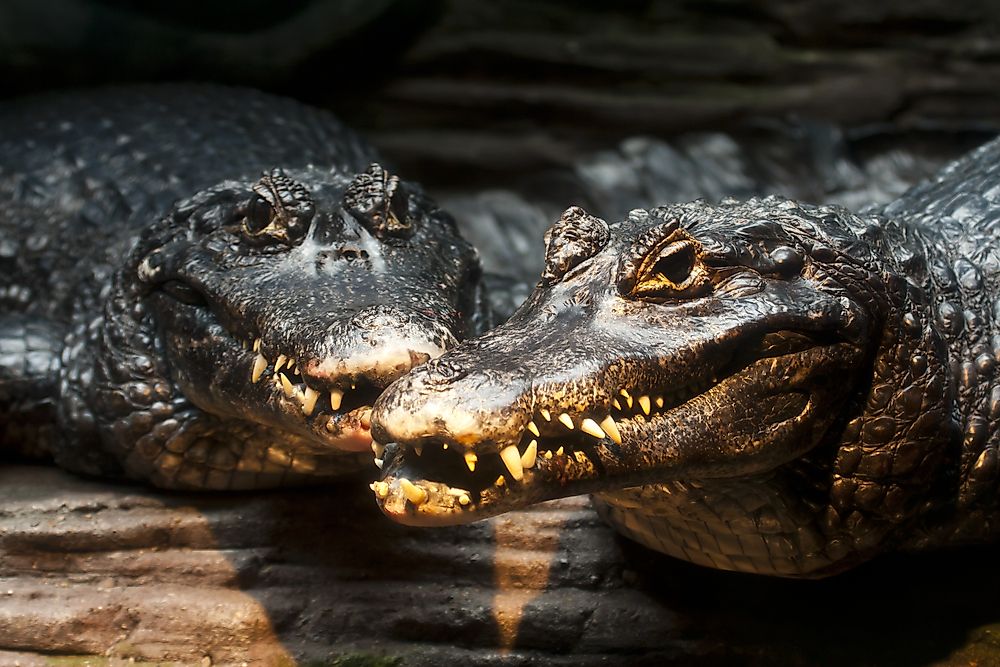
The black caiman is one of the biggest extant members of the Alligatoridae family. The massive predator lives in the lakes, slow-flowing rivers, and seasonally flooded savannas of the Amazon basin. It is regarded as the biggest predator of the Amazon ecosystem and feeds on a variety of birds, reptiles, fish, and mammals. The powerful creature is capable of taking in any animal that unknowingly ventures into its territory, and that also includes humans. Between January 2008 and October 2013, black caimans attacked 43 people but less than one-fifth of these attacks were fatal.
4. Bullet Ant
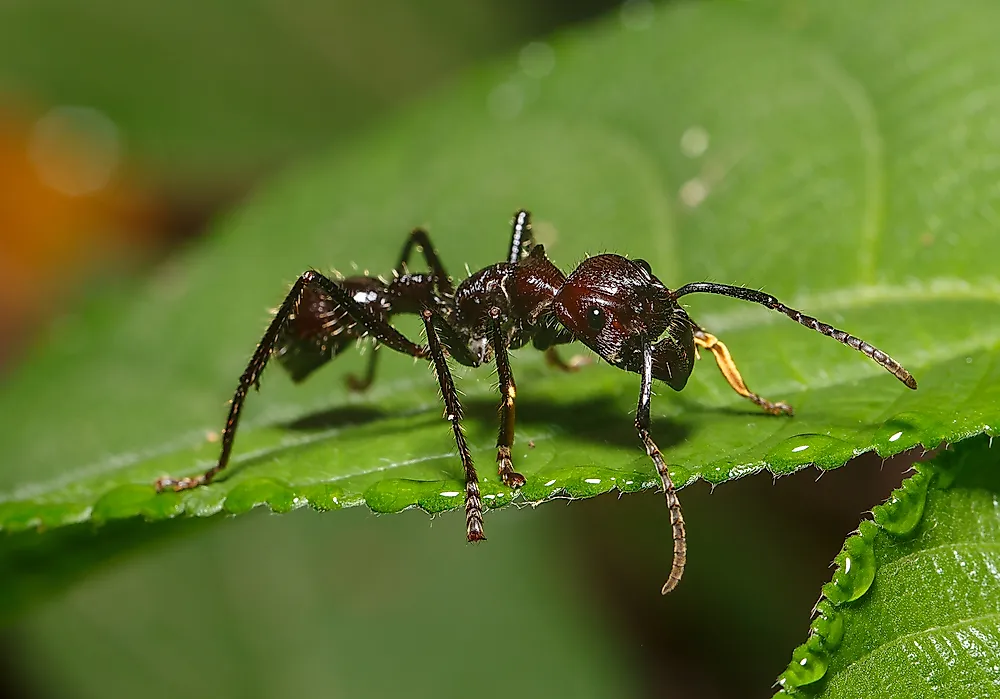
The bullet ant, named for its potent sting, is one of the creatures of the Amazon rainforest that is best avoided. These tiny insects are capable of bites that can trigger excruciating pain in the bitten area. The Schmidt sting pain index ranks the bullet ant’s sting as the most painful with a “4+” rating above that of the tarantula hawk wasp. Some victims have claimed that the pain is equal to that of being shot by a bullet. Once bitten, the victim develops an all-consuming pain that can torment victims for as long as 24 hours.
3. Piranhas
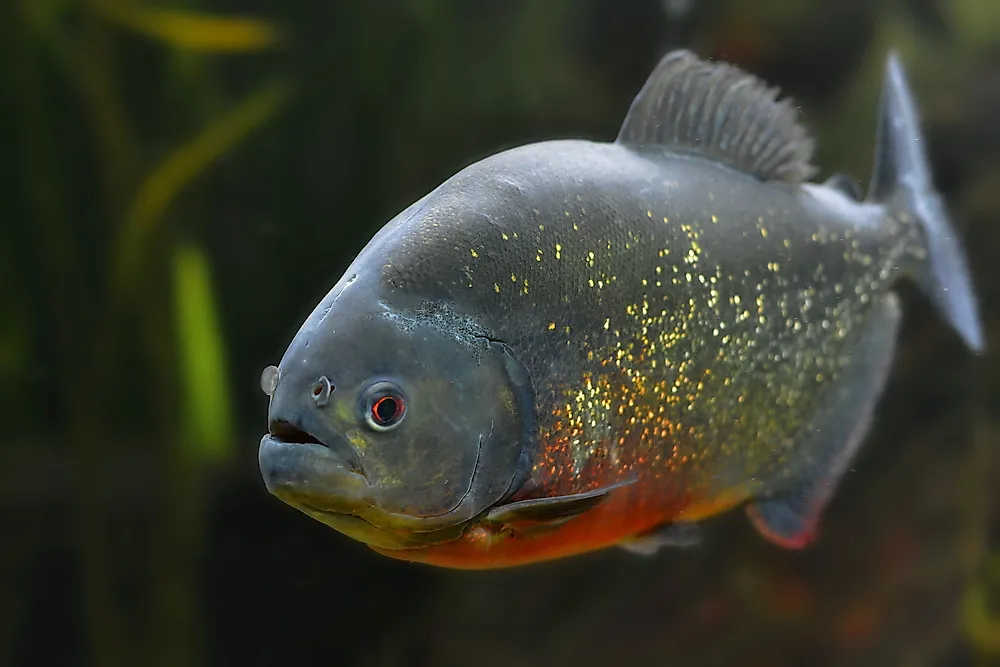
A piranha is one of the most dangerous aquatic inhabitants of the Amazon river basin. The piranhas are freshwater fish infamous for their powerful jaws and razor-sharp teeth. They have one of the strongest bites among bony fishes and the black piranha’s bite is one of the most forceful bites among vertebrates. The bite of the piranha can easily tear through all flesh including that of humans.
So, are piranhas man-eaters? Piranhas have been known to have devoured human flesh on a number of occasions. In 2015, a girl’s body partly eaten by piranhas was found in a the Maicuru River in Brazil. The girl was riding a boat with her grandmother and four other children when the boat capsized during a storm. It is still not clear whether the piranhas killed her or the piranhas fed on her after she drowned. Similar cases have been reported elsewhere. Despite the fish being reportedly so dangerous, humans have brought the fish to their tables and also created tools and weapons using piranha teeth and bones.
2. Poison Dart Frog
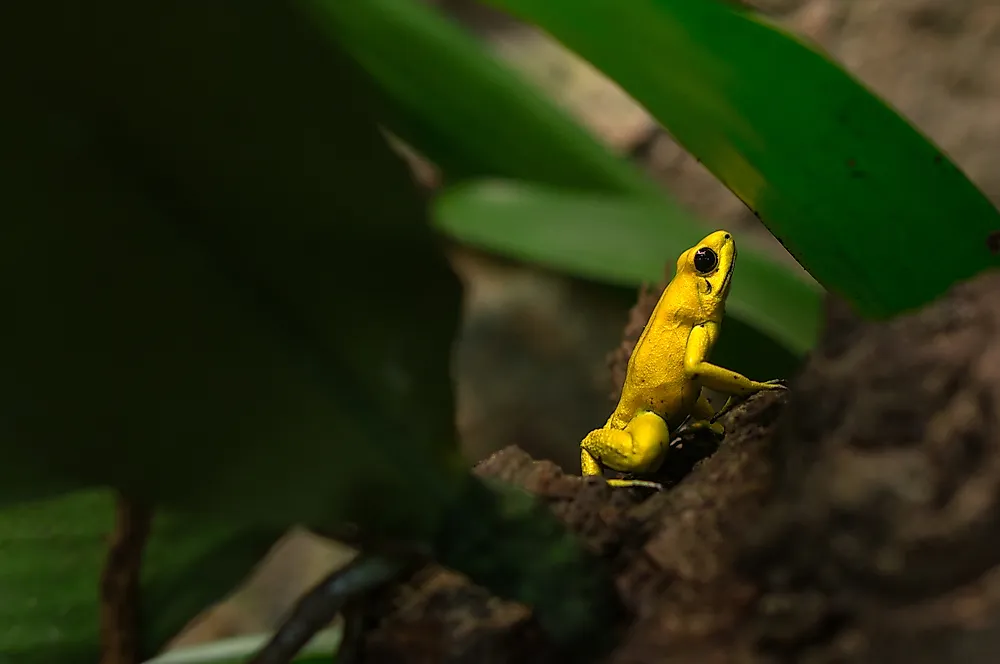
Poison dart frogs are perhaps the most deadly animals living on Earth. These brightly colored tiny frogs living in the Amazon might appear to be beautiful to us but the skin of some of these species harbor poison deadly enough to kill 10 adult human beings. The poison dart frogs receive their name from the darts or arrows coated with the toxin produced by these frogs that are used by the indigenous hunters to hunt animals and also enemies.
The golden poison frog is one of the most poisonous species of the poison dart frogs. The poison produced by these frogs is called batrachotoxin. The toxin is so potent that even in minuscule amounts, it can cause paralysis and death when it enters the bloodstream.
1. Green Anaconda
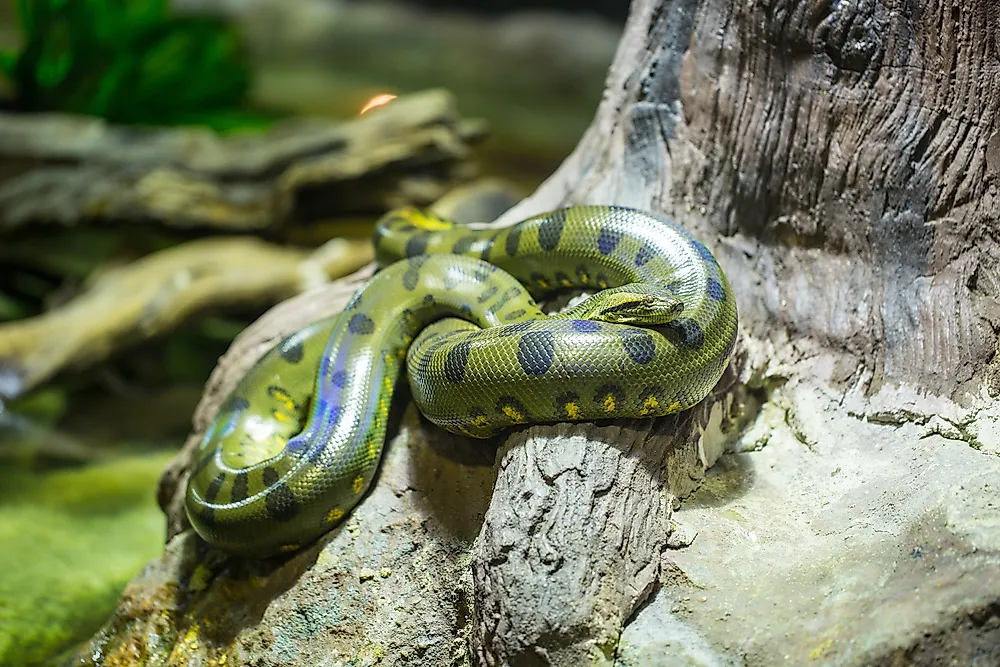
The green anaconda is a non-venomous constrictor found in the Brazilian Amazon and some other parts of South America. It is one of the most feared and revered species of the Amazon. The green anacondas live in swamps, slow-moving streams, and marshes of the Amazon where they remain nearly completely submerged in the water, waiting to strike on the unsuspecting prey that comes to drink the water. Although the snakes are sluggish on land, they are sleek and stealthy in the water. Once they catch their prey within their lethal coil, the prey’s last moments are near as the snakes suffocate their prey to death. Although no evidence has yet been recorded, the green anacondas have been often labeled as “man-eaters” with several unverified reports of humans being eaten by these giant snakes existing. Scientists conclude that it is not impossible for an anaconda to consume a human as these snakes eat prey that is tougher and stronger than humans. However, since humans and anacondas rarely interact, anacondas are not used to recognize humans as prey and thus the chances of anacondas eating humans is low.

